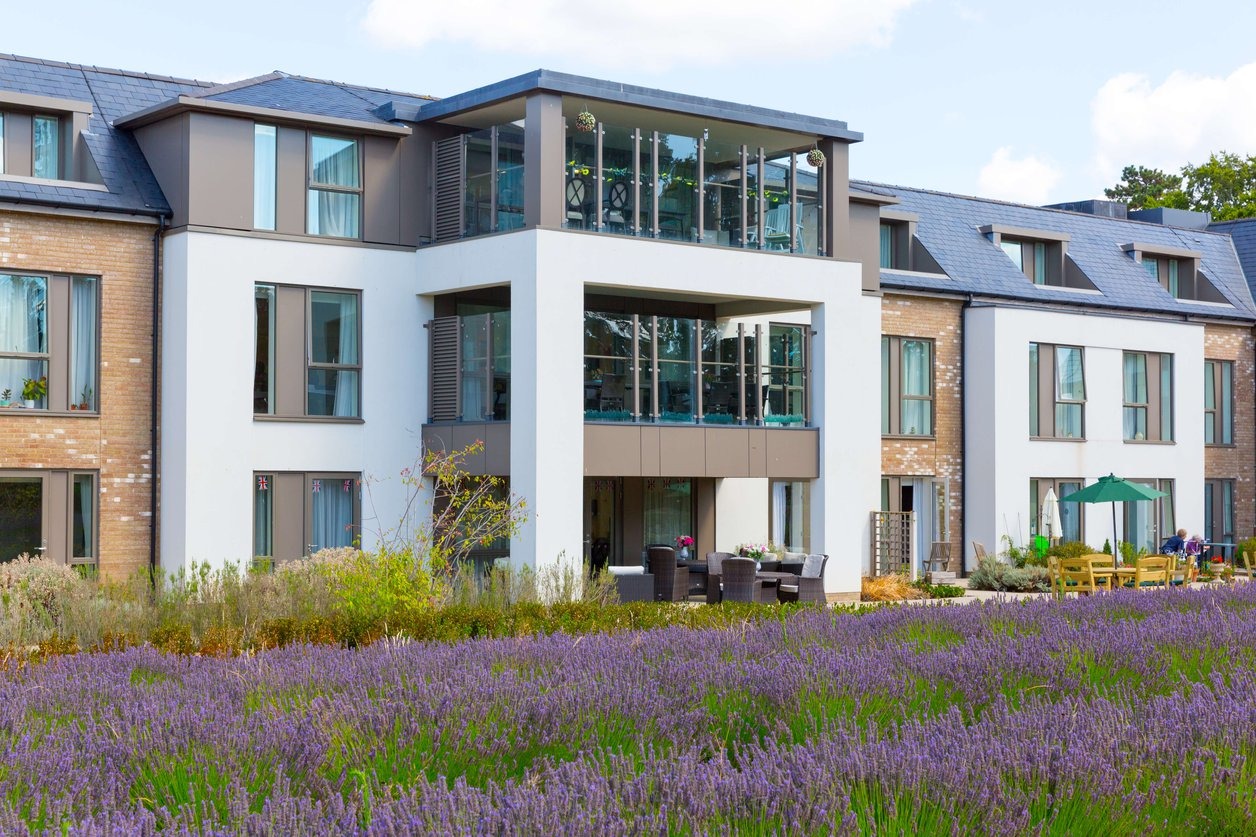Understanding Care Home Construction
Care home construction is a specialised field that combines traditional building techniques with healthcare-focused design and safety measures. The goal of such projects is to create spaces where elderly and vulnerable individuals can live in comfort, security, and dignity. Care home builders understand that these facilities are not just buildings but homes that support physical health, mental well-being, and social connection.
From site selection to final handover, care home construction involves a meticulous planning process. This includes ensuring compliance with healthcare regulations, implementing accessibility features, and designing welcoming environments that promote both safety and independence for residents.
What Makes Care Home Builders Different
Unlike general contractors, care home builders bring a unique set of skills and insights. They specialise in designing and constructing environments that cater to residents with mobility limitations, cognitive impairments, and complex medical needs. These professionals go beyond construction; they are partners in creating care-centred living solutions.
Care home builders are trained to handle intricate details such as reinforced walls for grab rails, non-slip flooring, integrated nurse call systems, and smart monitoring technologies. They also consider emotional comfort by including features like natural lighting, warm interiors, and landscaped outdoor spaces.
The Importance of Care Home Building Contractors
When planning a new care home facility or upgrading an existing one, choosing the right care home building contractors is crucial. These professionals serve as the backbone of the entire project, managing everything from design execution to regulatory approvals. Their knowledge of care facility standards and construction methods ensures that the building is completed on time, within budget, and to the highest quality standards.
Care home building contractors coordinate with architects, healthcare consultants, engineers, and regulatory bodies. They streamline complex processes while maintaining open communication with the client. Their role includes risk management, scheduling, and ensuring that safety measures are strictly adhered to throughout the project.
The Construction Process for Care Homes
A well-structured approach defines every care home construction project. The stages typically include:
- Consultation and Needs Assessment
Care home contractors begin by discussing the client’s vision, budget, and desired features. This helps determine the appropriate site size, room count, and services to be provided. - Design and Planning
Collaborating with architects and consultants, care home builders help design the layout to maximise functionality and resident safety. Considerations include room size, access points, medical stations, and communal areas. - Obtaining Approvals
All care home construction projects must meet strict local, state, and federal regulations. Builders ensure that planning permission, fire safety checks, and building certifications are obtained without delays. - Construction Phase
Care home building contractors manage the on-site activities, ensuring materials are delivered, tradespeople are coordinated, and construction progresses smoothly. - Final Inspection and Handover
Once construction is completed, the facility undergoes thorough inspection. After final approval, the building is handed over to the client, ready for fit-out and occupancy.
Focus on Accessibility and Safety
One of the most vital elements in care home construction is ensuring the safety and accessibility of every area. Residents often rely on mobility aids or require supervision, so care home contractors must build environments that support these needs.
Common safety features include:
- Handrails and grab bars in corridors and bathrooms
- Non-slip surfaces throughout all living areas
- Wide doorways and hallways for wheelchair access
- Emergency lighting and alarm systems
- Temperature-controlled showers and taps to prevent burns
Care home builders also install advanced security features such as keypad access, surveillance systems, and secure entry points to protect residents from wandering or outside intrusions.
Creating a Homely Environment
While care home construction prioritises functionality and safety, it’s equally important to create a space that feels like home. Many care home building contractors work closely with interior designers to select colour schemes, furnishings, and materials that create a warm and inviting atmosphere.
Rooms are often customisable so that residents can bring in personal items or décor. Common spaces like lounges, libraries, and activity rooms are designed to encourage social engagement. Dining areas are comfortable and communal, reinforcing a sense of belonging and community.
Outdoor areas are another focus. Gardens with pathways, seating areas, and sensory elements offer residents opportunities for relaxation and gentle exercise. Care home builders consider all these elements in their designs to enhance the quality of life for every resident.
Technology Integration in Care Home Construction
Modern care homes benefit from smart technology that improves safety, communication, and care delivery. Care home contractors increasingly incorporate infrastructure that supports these systems during the initial construction phase.
Some popular integrations include:
- Nurse call systems
- Fall detection sensors
- Smart lighting and climate control
- Electronic medication dispensing units
- Wi-Fi and video conferencing tools for family interaction
Care home building contractors ensure that wiring, equipment placement, and power management are all optimised to support this technology without disrupting the aesthetics or comfort of the space.
Renovation and Expansion of Existing Facilities
Care home contractors are not limited to new builds. Many also specialise in the renovation and expansion of existing care homes. As care standards evolve, older facilities may need upgrades to remain compliant and competitive.
Common renovation projects include:
- Adding en-suite bathrooms to older rooms
- Installing new fire protection systems
- Reconfiguring layouts for better mobility
- Modernising kitchens and dining areas
- Expanding capacity with additional wings
Experienced care home building contractors complete these upgrades while maintaining safety and minimising disruption to current residents. They schedule construction in phases, implement noise control, and adhere to strict cleanliness protocols.
Customisation Based on Care Needs
Care homes may focus on different types of care, including dementia care, palliative care, or short-term rehabilitation. Each requires a tailored approach to construction. Care home builders work closely with operators to design facilities that align with specific care models.
For example, dementia care homes often feature:
- Circular floor plans to reduce confusion
- Colour-coded walls and flooring
- Memory stations and personalised room signage
- Secure courtyards and gardens
Rehabilitation care homes, on the other hand, require therapy rooms, gym spaces, and mobility-focused infrastructure. Care home construction teams adapt their methods to create highly functional environments for specialised care delivery.
Sustainability in Care Home Building
Sustainability is becoming increasingly important in care home construction. Environmentally conscious care home builders use materials and designs that reduce energy consumption, improve air quality, and lower long-term operational costs.
Eco-friendly features include:
- LED lighting and energy-efficient HVAC systems
- Solar panels and renewable energy sources
- Low-flow water fixtures
- Recycled or sustainable building materials
- Green roofs and water harvesting systems
Sustainable care homes not only benefit the environment but also create healthier living conditions and can lead to operational cost savings, which can be redirected into resident services and care.
Legal and Regulatory Compliance
Care home construction must follow a strict legal framework, including health and safety laws, building codes, and care regulations. Reputable care home contractors are well-versed in these requirements and ensure full compliance from the planning phase to project completion.
They also handle documentation such as:
- Fire safety certifications
- Accessibility compliance reports
- Environmental impact assessments
- Occupancy permits
Delays in approvals can cost time and money. That’s why experienced care home building contractors manage every legal step carefully, reducing risk for their clients and ensuring a smooth transition to operation.
Choosing the Right Care Home Contractors
When planning a care home, choosing the right contractors is one of the most critical decisions. Care home contractors should be evaluated on several criteria:
- Past experience in care home projects
- Familiarity with healthcare building codes
- Client testimonials and project case studies
- Openness to collaboration and communication
- Capacity to handle projects of various scales
Trustworthy care home builders will provide clear timelines, transparent pricing, and realistic expectations. They’ll also offer flexibility for design adjustments and innovations during the build.
Future Trends in Care Home Construction
The future of care home construction is moving toward personalisation, technology, and community integration. New care homes are being designed not only for long-term care but also for short stays, transitional housing, and even multi-generational living.
Trends that care home builders are adapting to include:
- Modular construction for faster delivery
- Co-housing models that blend independence with support
- Integration of telehealth technologies
- Advanced infection control measures post-pandemic
- Multi-sensory rooms for cognitive stimulation
Care home building contractors are continuously innovating to meet the evolving expectations of residents, families, and care providers.
Conclusion
Care home builders play a fundamental role in developing environments where vulnerable individuals can live safely, comfortably, and with dignity. Their work goes far beyond bricks and mortar—they build homes where lives are supported and enriched.
With the expertise of care home building contractors, operators can ensure that their facilities meet regulatory requirements, support staff efficiency, and provide a nurturing experience for residents. Whether constructing a new facility or upgrading an existing one, choosing experienced care home contractors is a decision that shapes the future of aged and healthcare support.
The demand for quality care homes is only growing. By working with skilled professionals in care home construction, communities can be assured of safe, efficient, and compassionate living environments for generations to come.
Congrats! You’ve Finished This Blog.








